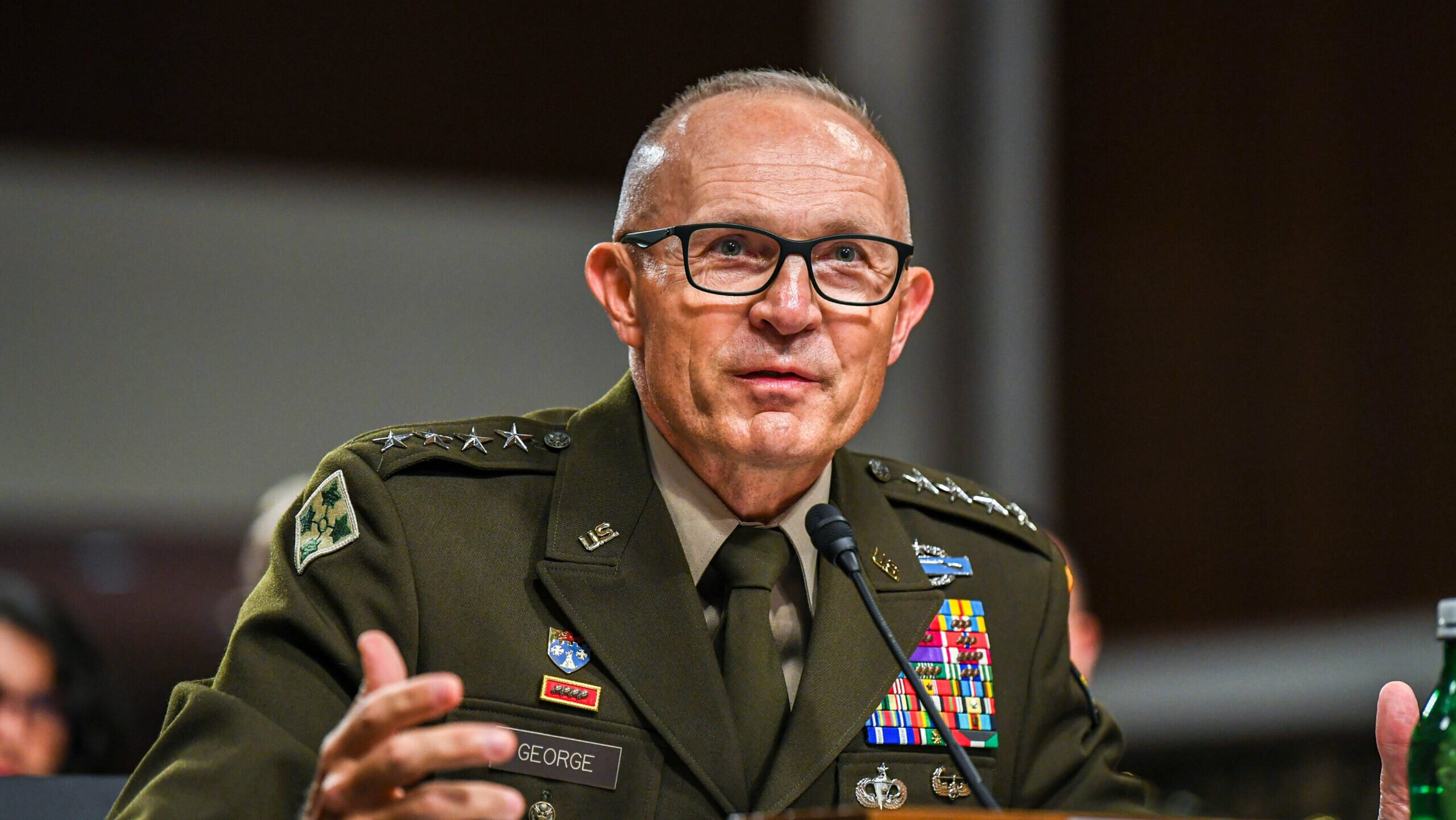Ashley Roque

US Army Chief of Staff Gen. James McConville bid adieu to the service this summer, handing the baton and a host of imperatives, from a munition production ramp up to a fight for more recruits to his successor, Gen. Randy George.
After serving a stint as the acting chief due to Alabama Republican Sen. Tommy Tuberville’s blanket hold on military nominees, George was sworn in as the 41st Army chief in September and brought with him four focus areas — warfighting, delivering ready combat power, undergoing continuous transformation and strengthening the profession of arms.
“We’re going to have to change how we’re organized … That’s one of the things that we have to go down the focus areas and ask four-star commanders and sergeant majors to take a look at and review,” the four-star general said at the Maneuver Warfighter Conference just days before his swearing in. “How are we structured and what needs to adjust based on the advances that we’re seeing? We are [also] going to have to change how we train.”
Those organizational changes have not yet been formally unveiled but could include force structure changes (i.e., the composition of brigade combat teams) and deciding on just which echelon elements like the multi-domain task force and security force assistance brigade should fall under.
In addition, George stepped into the role in 2023 when his service continues to face a recruitment shortfall with no end in sight. When fiscal 2023 ended on Sept. 30, for example, the service met its end-strength of goal of 452,000 active-duty soldiers thanks to stronger retention numbers. However, it fell 10,000 recruits short of its 65,000 “stretch goal” and from that 55,000 total, 4,600 people would enter the service in FY24 as part of the delayed entry program.
George, along with Army Secretary Christine Wormuth, briefed lawmakers about force structure changes to address their recurring challenge and detail plans to make adjustments to account for fewer soldiers. Those plans, not formally unveiled, include cuts to “over structure” at bases around the country, looking at the right mix of military occupational specialty numbers inside units, and cutting back the number of Army special forces, Wormuth told reporters in October.
Beyond those looming changes, George and other service leaders spent 2023 looking at ways to replenish weapon stockpiles — depleted first by the war in Ukraine and later between Israel and Hamas — and boost munition production.
While Congress has not yet approved the FY24 defense spending bill, the request includes dollars for several multi-year munition buys to include an ask for Patriot interceptors and Guided Multiple Launch Rocket System (GMLRS), a move acquisition officials contend will help provide industry with stability.
Service leaders are waiting to see how that spending request shakes out, but also spent the year chasing a plan to produce 100,000 155mm artillery rounds per month by 2025, and awarded $1.5 billion worth of contracts in the second half of September alone to get there. Part of that plan, though, hinges on the White House’s recent supplemental spending request which includes $3.1 billion for 155mm production and facilities.
House and Senate lawmakers have yet to approve the bill, in part because of a brewing disapproval by some House Republicans about continuing to provide military aid to Ukraine, but Army acquisition head Doug Bush warned in October that if the service does not receive those dollars for the 155mm, “We won’t get to” that 100,000 round production goal.
No comments:
Post a Comment